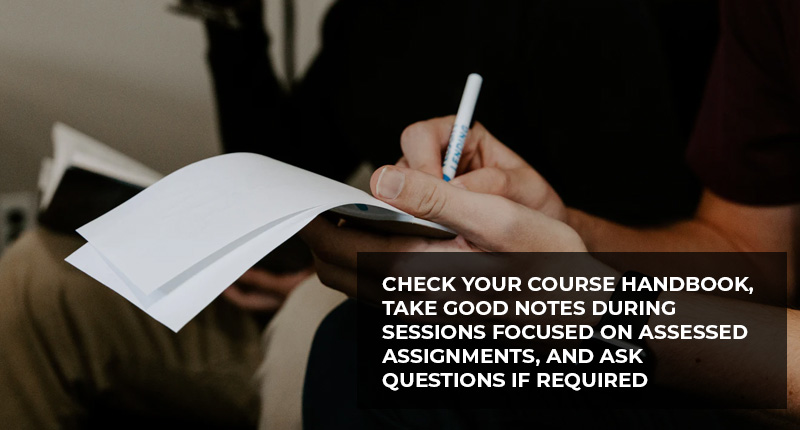On an initial training course in TESOL, you will have close contact with your course trainers as they guide you through the assignments, input and teaching practice required for the course.
Teacher trainers for these courses are carefully selected for their expertise and experience in the field, and they want you to pass the course as much as you do. However, time is limited for everyone involved in this intense period of training. So there is often little time for trainers to cover everything that individual trainees need every step of the way.
It may feel like you are taking some shots in the dark as you write, teach and reflect on what you are doing on the course.
So it pays to know what qualities your trainers will be looking for (in you as a trainee) before you start, in order to perform to your highest in the various assessments that you will undergo as part of teacher development training.
Here are some of those qualities, and some ways of demonstrating that you have a clear understanding of what is expected of you during the CertTESOL or CELTA course.
1. Preparedness
Your acceptance onto an initial TESOL training course such as a CELTA or CertTESOL means that you have already shown a range of skills, motivations and knowledge which course trainers are looking for.
You will have passed a rigorous interview process, worked with some language analysis tasks and explored some issues in teaching and learning, which are required for success on the course.
Don’t see this as the end of an admissions process, but as the beginning of your development as a teacher. Ask for a copy of your course application and use this as a starting point for further development of these important points, as you will be continuing this style of work for the period of the course.
Pre-course Pack: Before you attend your first week of the course, you will receive a pre-course pack that introduces you to a wide range of information, terminologies and relevant issues in the field of TESOL.

Photo credit to Avel Chuklanov on Unsplash
Although this is not compulsory, you should make the most of this valuable resource, and work through it from cover to cover.
On day one of the course, it will be obvious who has done this (gone through the pre-course pack), and who is coming to the subject fresh, and has therefore already missed a vital opportunity to do some groundwork to prepare for the intense workload which is coming up.
Some basics which course trainers expect trainees to be able to work with are:
- a basic understanding of the International Phonemic Alphabet (IPA)
- the ability to identify parts of speech (nouns, verbs, adjectives, etc.)
- a basic knowledge of some teaching approaches and methods (communicative language teaching, the direct method, the lexical approach, inductive and deductive approaches), and
- a basic understanding of the course structure (timetable, assignments, deadlines, etc.)
On an intensive course like the CertTESOL or CELTA, there simply isn’t enough time to cover and re-cover these basic aspects of the course. So make good use of the resources you are given, and get familiar with these important course information, so that your trainers can focus on guiding you through the more complex input that they have to cover.
It will be assumed that you are familiar with the information you are given without being directly instructed to go back and find things out. So be proactive, be prepared and your course experience will move more smoothly for everyone concerned.
2. Understanding of Assessment
Your course tutors will be responsible for giving you input into teaching, learning and language, observing and grading your teaching practice, setting and grading your written assignments and a host of other course admin tasks, which can be time-consuming in this stressful period.
For this reason, it is essential that you have a good understanding of the purpose, structure and content of your written assignments.
Most centers allow trainees to submit at least one draft assignment for each of their assessed pieces of work, before continuing and completing each unit.
If your work is poorly structured, it will be returned to you to be rewritten and resubmitted. This takes time, which neither you nor your trainers have to devote to repeated work. So it is in your interest to get it right first time, improve things based on tutors’ feedback and move on to the next responsibility for the course.

Photo credit to Kaleidico on Unsplash
In order to understand how to complete assignments, check your course handbook, take good notes during sessions focused on assessed assignments, and ask questions when they come up rather than waiting until it’s too late.
Think about how to order the content of each assignment, write clear section headings and develop your ideas in line with the purpose of the assignment.
As a rule, it is a good idea to develop any comment you make with reasons and examples, relating everything to classroom teaching where possible. This ensures that you are justifying your comments and that you are writing in the context of your teaching – the most important aspect of the course.
3. Response to Feedback
The bulk of your contact with your tutors will be in your observed teaching practice lessons, after which you will receive feedback on your teaching from your tutors and your peer observers.
During this feedback, you will need to reflect openly and honestly about the effectiveness of your teaching and work to improve key issues next time around.
During feedback, take notes about key action points and think about alternative methods that will make these teaching actions more effective in the future.

Photo credit to Amy Hirschi on Unsplash
Trainers get really frustrated if they have to tell trainees the same things time after time (again, there simply isn’t time to repeat the same feedback to the same trainees), so act on the points your tutor raises, and your teaching will only improve as you progress through the course.
This is equally true in your written assessments. Tutors may look at a draft assignment and give you some written feedback – if you resubmit after being advised how to improve things, and the same problems persist, this can affect your assignment grade significantly, so keep your ears open, write key points down and change how you do things accordingly.
4. Time Management
Another aspect of these intensive courses which can affect both trainees and trainers is how everyone manages their time in this intense setting.
Doing things at the last minute simply isn’t possible on a course like the CertTESOL or CELTA, as for every day you wait before doing something, another one or two assignments will come along to push your timetable back again.

Photo credit to Aron Visuals on Unsplash
When something is given to you for homework, do it as soon as possible and move on. If the odd piece of work gets left behind, use the weekend to catch up and work forward, and you won’t have any more nasty surprises as the workload builds through the course.
Again, course trainers are working to the same assessment deadlines as you, and the amount of course admin that they have to complete increases towards the end of the course. So when a trainee comes to a trainer the day before an assignment is due, saying “… about that… I’m not going to get it done until…”, the knock-on effects can take a lot of time to work through.
Your time management and how you work to deadlines tells us a lot about how you deal with the workload. The more you have to think about, the lower the quality of each piece of work will be due to the reduced focus you can give to each of your course responsibilities.
Also Read: How to effectively manage your time during a teacher training course
5. Flexibility
Finally, remembering that every certificate course in TESOL includes a different group of trainees, with their specific strengths and weaknesses, runs to limited time, and often experiences dropouts, timetable changes and unexpected developments. It is really important that you are flexible when meeting changes that come up during the course.
Changes of students, moved classrooms and swapped timetable slots are simply part of the teaching job. Every teacher has had to cover for a sick colleague, teach without the resources they were planning to use, or deal with a timetable change at the last minute, so showing that you can be flexible to meet these challenges head-on will stand you in good stead for the course.

Photo credit to Wesley Tingey on Unsplash
Flexibility, compromise, collegiality and professionalism are all essential features of a good teaching professional, so these qualities are equally valued in course trainees.
Be prepared to teach your next lesson before you enter the training center any day you are teaching, and be ready to teach at least an hour before you are timetabled, and you will help the course to run smoothly for everyone, trainers and trainees included.
Do all this with a smile on your face and a helping hand for others on the course, and you will be a valued member of the group. This is what working in an educational environment is like, so take a flexible attitude to everything that you do, and your life will be a lot easier in the long run.
Conclusion: Overall, the above points are excellent ways of keeping your trainers happy and keeping stress levels down for everyone in a high-pressure environment. This is important as everyone performs better when the atmosphere is more relaxed, so it is in the benefit of all concerned to be prepared, get things done on time, ask questions early to avoid issues later on and to take a positive, professional attitude to the course.
This is the recipe for success on a course like the CertTESOL or CELTA, and help to make the experience as rewarding as it can be for everyone involved.
Featured image credit to Akson on Unsplash
This article was originally published in Mar-2020 and was last updated in Nov-2020.
Author: Tom Garside




